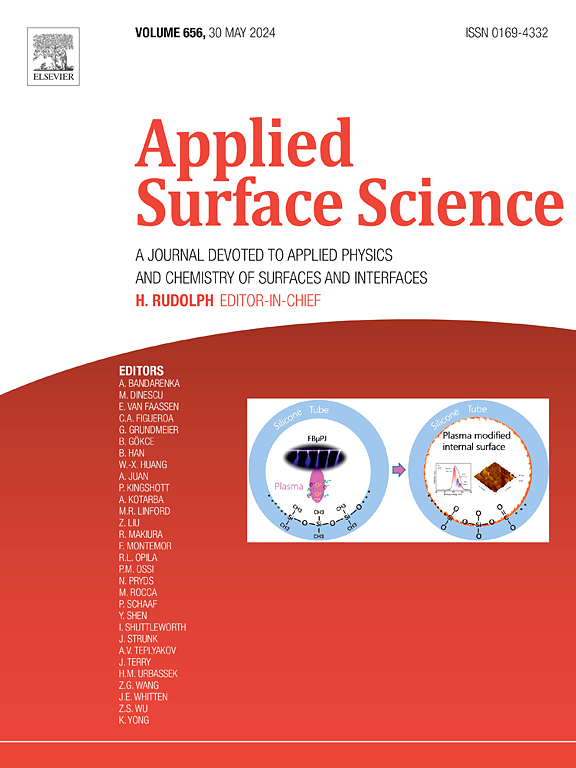优化纳米结构平台增强检测光合色素
IF 6.3
2区 材料科学
Q2 CHEMISTRY, PHYSICAL
引用次数: 0
摘要
等离子体纳米技术的进步使光合色素的研究发生了革命性的变化,使开发出各种应用的高效人工设备成为可能。在这项研究中,我们开发了一种纳米平台,其中包括具有促生和十硫醇配体功能化的金纳米棒,并将其纳入由氧化铝层保护的Langmuir-Schaefer单层中。叶绿素a进一步功能化了纳米平台,使等离子体增强能够提高色素检测。我们的研究结果表明,隔离层厚度与隔离层厚度密切相关,在大约10 nm处增强效果最佳。值得注意的是,该系统的设计支持其他光合色素的检测,其q波段最大值转移到750 nm以上的波长。这项工作为光合色素中等离子体诱导的效应提供了基本的见解,并强调了该纳米平台在传感和基于等离子体的结构中的应用潜力,因为染料的浓度范围广,检测限值低。本文章由计算机程序翻译,如有差异,请以英文原文为准。

Optimizing nanostructured platform for enhanced detection of photosynthetic pigments
Advancements in plasmonic nanotechnology have revolutionized the study of photosynthetic pigments, enabling the development of efficient artificial devices for diverse applications. In this study, we developed a nanoplatform comprising gold nanorods functionalized with promesogenic and decanethiol ligands and incorporated into Langmuir-Schaefer monolayers protected by aluminum oxide layers. The nanoplatform was further functionalized with chlorophyll a, enabling plasmonic enhancement for improved pigment detection. Our findings demonstrate a strong dependence on the spacer layer thickness, with optimal enhancement at approximately 10 nm. Notably, the system’s design supports the detection of other photosynthetic pigments with Q-band maxima shifted to wavelengths beyond 750 nm. This work provides fundamental insights into plasmon-induced effects in photosynthetic pigments and highlights the potential of this nanoplatform for applications in sensing and plasmonic-based architectures due to the wide concentration range of dye connected with a low value of its limit of detection.
求助全文
通过发布文献求助,成功后即可免费获取论文全文。
去求助
来源期刊

Applied Surface Science
工程技术-材料科学:膜
CiteScore
12.50
自引率
7.50%
发文量
3393
审稿时长
67 days
期刊介绍:
Applied Surface Science covers topics contributing to a better understanding of surfaces, interfaces, nanostructures and their applications. The journal is concerned with scientific research on the atomic and molecular level of material properties determined with specific surface analytical techniques and/or computational methods, as well as the processing of such structures.
 求助内容:
求助内容: 应助结果提醒方式:
应助结果提醒方式:


